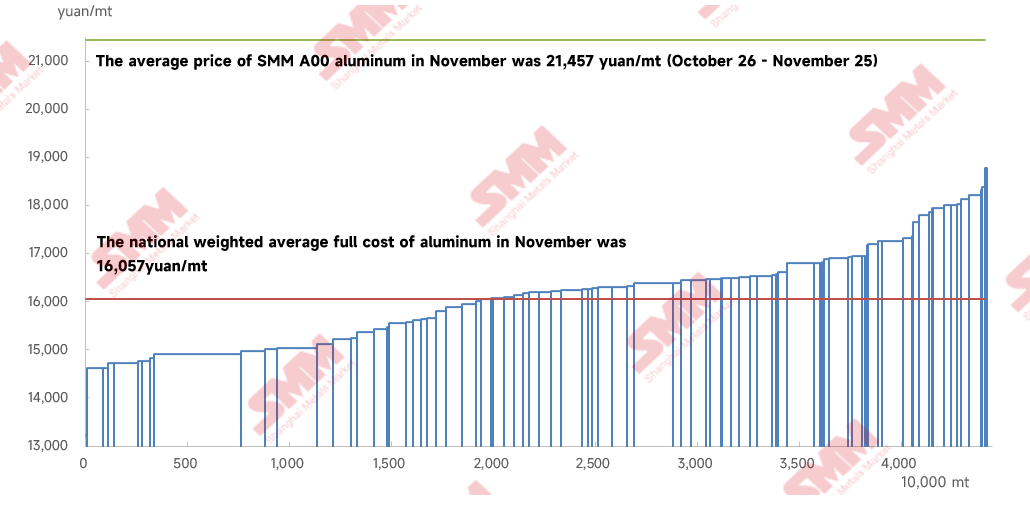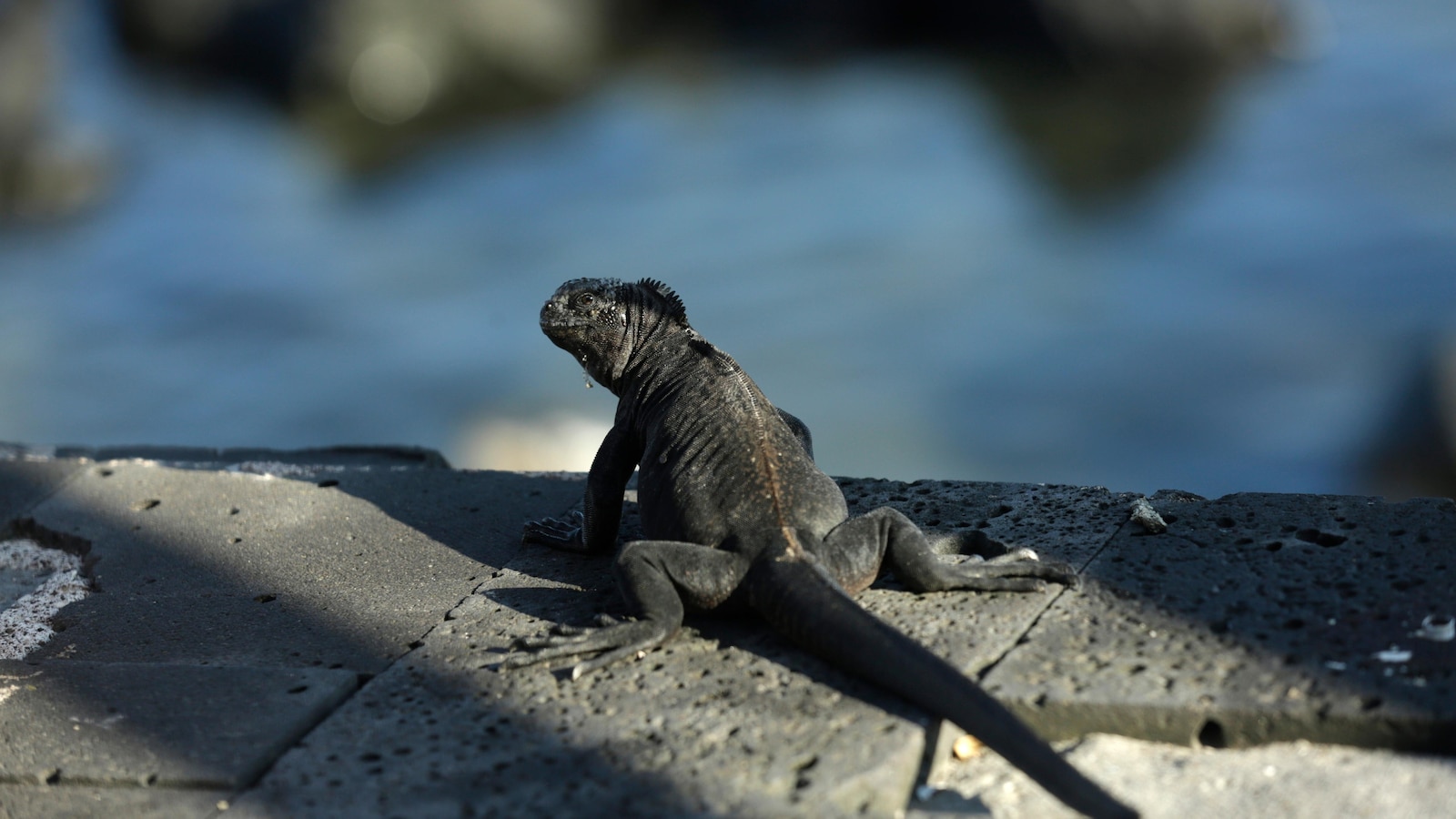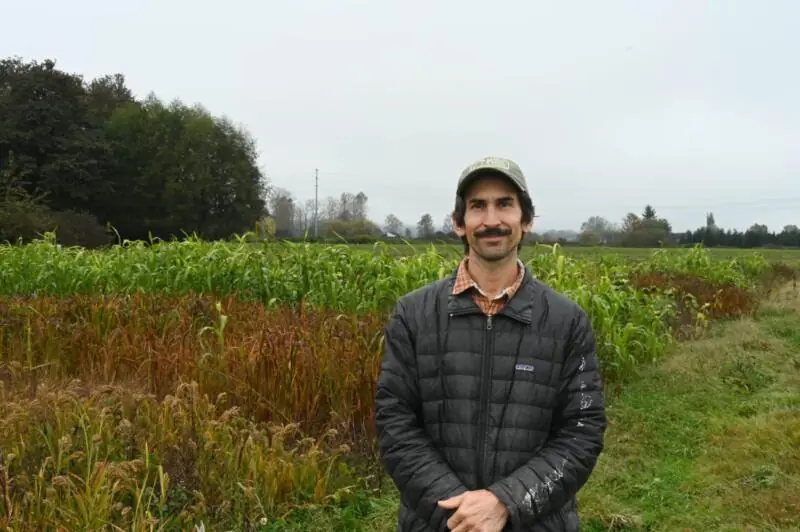To Save A Disappearing Fish, South African Farmers Open Their Ponds – Circle of Blue

Report on the Conservation of the Clanwilliam Sandfish in South Africa
Executive Summary
This report details the conservation efforts for the Clanwilliam sandfish, South Africa’s most threatened migratory freshwater fish, endemic to the Olifants-Doring River basin. The species’ decline is a direct indicator of severe environmental pressures, including water scarcity, agricultural overuse, invasive species, and climate change, which are undermining progress towards several Sustainable Development Goals (SDGs). A multi-stakeholder initiative, “Saving Sandfish,” demonstrates a practical approach to biodiversity conservation through community partnerships, directly addressing targets within SDG 15 (Life on Land), SDG 6 (Clean Water and Sanitation), SDG 13 (Climate Action), and SDG 17 (Partnerships for the Goals). The project’s methodology of rescuing juvenile fish and utilizing agricultural reservoirs as sanctuaries has shown initial success but highlights the urgent need for systemic water management reform to ensure long-term ecological viability.
1.0 Introduction: A Local Crisis Reflecting a Global Challenge
The near-extinction of the Clanwilliam sandfish serves as a microcosm of the global freshwater biodiversity crisis. Historically abundant, the population has dwindled to several hundred individuals, symbolizing the vulnerability of freshwater ecosystems, which are experiencing biodiversity loss more rapidly than any other environment on Earth. The health of this flagship species is intrinsically linked to the health of the Olifants-Doring watershed, a water-scarce region heavily impacted by human activity and climate change.
1.1 Alignment with Sustainable Development Goals
The plight of the sandfish and the response to it are directly relevant to the 2030 Agenda for Sustainable Development. The core issues and solutions align with the following key SDGs:
- SDG 15 (Life on Land): The project’s primary objective is to take urgent action to halt biodiversity loss (Target 15.5) and ensure the conservation and sustainable use of freshwater ecosystems (Target 15.1).
- SDG 6 (Clean Water and Sanitation): The initiative underscores the necessity of protecting and restoring water-related ecosystems (Target 6.6) and implementing integrated water resources management (Target 6.5) in a region where agriculture accounts for over 60% of water use.
- SDG 13 (Climate Action): Conservation efforts are set against a backdrop of accelerated regional warming, highlighting the need for strategies that build resilience to climate-related hazards and natural disasters (Target 13.1).
- SDG 17 (Partnerships for the Goals): The project is a model of a multi-stakeholder partnership (Target 17.17) that brings together scientific institutions, private landowners, and local communities to achieve common conservation goals.
2.0 Threats to the Olifants-Doring Ecosystem and its Biodiversity
The decline of the Clanwilliam sandfish is attributed to a confluence of environmental pressures that threaten the integrity of the entire river basin and impede progress on SDG 6 and SDG 15.
2.1 Key Environmental Stressors
- Water Scarcity and Over-allocation: As one of the world’s 30 driest countries, South Africa faces a projected 17% water deficit by 2030. The Olifants-Doring basin is over-allocated, primarily for agriculture, leading to river fragmentation and the drying of critical habitats. This directly challenges the sustainable management of water as outlined in SDG 6.
- Invasive Alien Species: The introduction of predatory fish such as bluegill and bass for sportfishing has decimated juvenile sandfish populations, representing a major driver of biodiversity loss and a direct threat to Target 15.8 (control of invasive alien species).
- Climate Change Impacts: The region is warming at twice the global average, exacerbating drought conditions and reducing water flow. This climate-induced stress makes the ecosystem, and the species within it, more vulnerable, underscoring the importance of climate action under SDG 13.
- Habitat Degradation: The combination of reduced river flow and invasive, water-intensive vegetation has led to the complete seasonal drying of essential tributaries like the Biedouw River, destroying nursery habitats for sandfish fry.
3.0 The “Saving Sandfish” Initiative: A Partnership Model for SDG 17
In response to the crisis, the Freshwater Research Centre (FRC) initiated the “Saving Sandfish” project, a collaborative effort that exemplifies the principles of SDG 17 by leveraging partnerships to achieve conservation outcomes.
3.1 Project Methodology and Implementation
The project employs an innovative, hands-on conservation strategy referred to as “bucket science.” The process involves several key stages:
- Rescue Operations: Scientists and volunteers collect thousands of juvenile sandfish from drying pools in the Biedouw River after the spawning season.
- Sanctuary Relocation: The rescued fry are transported to nearby farm irrigation ponds, which have been offered by local landowners as safe, predator-free sanctuaries.
- Maturation Period: The fish are raised in these reservoirs for one to five years, growing to a size where they are no longer vulnerable to predation by invasive species.
- Reintroduction and Monitoring: Mature sandfish are tagged and released back into the river system. Their subsequent movements are monitored to confirm their ability to rejoin the wild population and participate in annual spawning migrations.
3.2 Results and Contribution to SDG 15.5
The initiative has achieved significant early successes in preventing the immediate extinction of the species, directly contributing to Target 15.5 (halting biodiversity loss).
- To date, 45,000 juvenile fish have been rescued and relocated to sanctuary ponds.
- Nearly 6,000 mature sandfish have been returned to the Biedouw River.
- Monitoring confirmed that at least 18% of the reintroduced fish successfully migrated back to spawn, nearly tripling the size of the initial surveyed spawning population.
4.0 Future Outlook and Systemic Challenges
While the “Saving Sandfish” project provides a critical lifeline, it is a temporary solution. Long-term success is contingent on addressing the root causes of the ecosystem’s decline, particularly water management policy.
4.1 The Imperative for Water Reform (SDG 6.5)
The project’s vulnerability was demonstrated during a recent dry season when low river flows severely limited the spawning migration. This highlights that conservation efforts cannot be decoupled from broader water resource management. The next phase of the project will require difficult conversations with agricultural partners about water use efficiency and allocation. Achieving a sustainable balance between agricultural needs (SDG 2) and environmental flows for ecosystem health (SDG 6, SDG 15) is the ultimate challenge.
5.0 Conclusion: A Flagship Species for Sustainable Development
The effort to save the Clanwilliam sandfish is more than a single-species conservation project; it is a powerful demonstration of the interconnectedness of the Sustainable Development Goals. The survival of the sandfish is a barometer for the health of the entire Olifants-Doring watershed. Its recovery depends on integrated water management (SDG 6), climate resilience (SDG 13), the protection of life on land (SDG 15), and the strength of multi-stakeholder partnerships (SDG 17). The golden scales of the sandfish, once a symbol of natural abundance, now represent a critical opportunity to motivate collective action towards a more sustainable and resilient future for the region.
Analysis of Sustainable Development Goals in the Article
1. Which SDGs are addressed or connected to the issues highlighted in the article?
The article on the conservation of the Clanwilliam sandfish in South Africa addresses several interconnected Sustainable Development Goals (SDGs). The primary focus on freshwater biodiversity, water scarcity, and community-led conservation efforts links directly to the following goals:
-
SDG 6: Clean Water and Sanitation
- The article extensively discusses water scarcity in South Africa, one of the “30 driest countries in the world.” It highlights the over-allocation of water resources, with “98 percent of its water resources are already committed, largely to agriculture,” and the direct impact this has on the Olifants-Doring River basin, where river pools are “drying up completely each summer.” This directly relates to the sustainable management of freshwater resources.
-
SDG 13: Climate Action
- Climate change is presented as a critical threat. The article notes that the region is “warming twice as fast as the rest of the world” and that dry, low-flow basins are highly vulnerable “under all emissions scenarios.” The increased frequency and severity of droughts, which limit the sandfish’s migration and survival, are clear climate-related hazards that the conservation project is attempting to adapt to.
-
SDG 14: Life Below Water
- While primarily focused on oceans, this goal’s principles of protecting aquatic ecosystems are relevant. The article’s central theme is the conservation of an aquatic species, the sandfish, and its freshwater habitat. It addresses the global crisis of biodiversity loss in aquatic environments, stating, “Nowhere on Earth is the loss of biodiversity more rapid than in freshwater ecosystems.”
-
SDG 15: Life on Land
- This goal is highly relevant as it explicitly includes the protection of inland freshwater ecosystems and their biodiversity. The article is a case study in halting biodiversity loss by focusing on a critically threatened species. It discusses key threats targeted by SDG 15, such as habitat degradation (drying rivers), preventing the extinction of threatened species (the sandfish), and combating invasive alien species (bluegill and bass).
-
SDG 17: Partnerships for the Goals
- The success of the “Saving Sandfish” project is built on multi-stakeholder partnerships. The article describes a collaborative effort involving “scientists, local land owners, Indigenous stewards, and young students.” This partnership between a research center, private farmers, and the local community exemplifies the collaborative approach needed to achieve sustainable development.
2. What specific targets under those SDGs can be identified based on the article’s content?
Based on the issues and actions described, several specific SDG targets can be identified:
-
Target 6.4: Increase water-use efficiency and ensure sustainable withdrawals.
- The article points to the inefficiency and over-allocation of water, stating that “agriculture accounts for more than 60 percent of all water usage” and that South Africa faces a “17 percent water shortage” by 2030. The project’s future challenges involve “harder conversations about water use,” directly addressing the need for more efficient and sustainable water management.
-
Target 6.6: Protect and restore water-related ecosystems.
- The entire “Saving Sandfish” project is an effort to restore a component of the Olifants-Doring River ecosystem. By working to save the sandfish, the project inherently aims to protect and eventually restore the health of the river habitat upon which the species depends. The article notes that the “health of a fish is only as good as the health of the river system it calls home.”
-
Target 15.1: Ensure the conservation and sustainable use of inland freshwater ecosystems.
- The project’s focus on the Olifants-Doring River basin is a direct action towards the conservation of an inland freshwater ecosystem. The efforts to understand the fish’s life cycle and the threats it faces are fundamental to the long-term conservation of this unique habitat.
-
Target 15.5: Halt biodiversity loss and prevent the extinction of threatened species.
- This is the central theme of the article. The Clanwilliam sandfish is described as “South Africa’s most threatened migratory freshwater fish species.” The project’s “bucket science” is an urgent intervention designed specifically to “prevent the extinction” of this species.
-
Target 15.8: Prevent and reduce the impact of invasive alien species.
- The article explicitly identifies “invasive bluegill and bass” as a primary reason for the sandfish’s decline, as they “quickly eat the defenseless fingerling and fry.” The conservation strategy of moving young fish to protected farm ponds is a direct measure to mitigate the impact of these invasive species.
-
Target 17.17: Encourage effective public, public-private and civil society partnerships.
- The project is a model for this target. It is a partnership between the Freshwater Research Centre (civil society/research), local farmers like Gus Bradley (private sector), and Indigenous stewards (local community). The article highlights that this collaboration was essential for the project to “really [take] off.”
3. Are there any indicators mentioned or implied in the article that can be used to measure progress towards the identified targets?
Yes, the article mentions several quantitative and qualitative indicators that can be used to measure progress:
-
Indicator for Target 15.5 (Biodiversity loss): Population numbers of the threatened species.
- The article provides a clear baseline and progress data. It states the population declined from “tens of thousands” to “just several hundred.” The project’s success is measured by the number of fish rescued (“45,000 fish have been placed… into farmers’ sanctuary ponds”), the number returned to the wild (“nearly 6,000 have been returned”), and the number that successfully migrate to spawn (“at least 18 percent of these — some 480 adults — have successfully migrated back,” which “nearly tripling the size of the 2020 spawning run”). The low return of “just 23 adults” in a dry year also serves as a critical indicator of environmental conditions.
-
Indicator for Target 6.4 (Water stress): Data on water availability and use.
- The article implies indicators of water stress by citing figures such as South Africa’s projected “17 percent water shortage,” the fact that “98 percent of its water resources are already committed,” and that agriculture uses over “60 percent” of the water. The physical drying of the Biedouw River (“The lower 20 kilometers dry up completely each summer”) is a direct, observable indicator of extreme water stress.
-
Indicator for Target 15.8 (Invasive species): Survival rate of native species.
- An implied indicator is the survival rate of juvenile sandfish. The article explains that in the river, fry are “proverbial fish in a barrel” for invasive predators. By moving them to protected ponds where they can grow “too large to be eaten by bluegill and bass,” the project directly increases their survival rate, which is a measure of successfully reducing the impact of invasive species.
-
Indicator for Target 17.17 (Partnerships): Number and diversity of partners involved.
- The article indicates the growth of the partnership, starting with one landowner and expanding to where “half a dozen other farmers soon joined.” The diversity of partners—scientists, landowners, Indigenous stewards, students—is itself an indicator of a successful multi-stakeholder collaboration.
4. Table of SDGs, Targets, and Indicators
| SDGs | Targets | Indicators Identified in the Article |
|---|---|---|
| SDG 6: Clean Water and Sanitation |
6.4: Increase water-use efficiency and ensure sustainable withdrawals. 6.6: Protect and restore water-related ecosystems. |
– Projected 17% national water shortage. – 98% of water resources are already committed. – Physical drying of river sections (e.g., lower 20km of the Biedouw). – Health and population of indicator species (sandfish) reflecting ecosystem health. |
| SDG 15: Life on Land |
15.1: Conserve and restore inland freshwater ecosystems. 15.5: Halt biodiversity loss and prevent extinction of threatened species. 15.8: Reduce the impact of invasive alien species. |
– Population decline of sandfish from “tens of thousands” to “several hundred.” – Number of juvenile fish rescued (45,000) and adults returned to the river (6,000). – Percentage of returned fish that successfully migrate to spawn (18%). – Increase in the size of the spawning run (tripled since 2020). – Survival rate of juvenile fish in protected ponds versus the river. |
| SDG 13: Climate Action | 13.1: Strengthen resilience and adaptive capacity to climate-related hazards. |
– Rate of regional warming (“twice as fast as the rest of the world”). – Frequency of drought conditions leading to low river flows. – Fluctuation in migrating fish numbers based on annual rainfall (e.g., only 23 fish in a dry year). |
| SDG 17: Partnerships for the Goals | 17.17: Encourage effective public, public-private and civil society partnerships. |
– Number of participating farmers (started with one, grew to “half a dozen”). – Diversity of stakeholders involved (scientists, landowners, Indigenous stewards, students). |
Source: circleofblue.org
What is Your Reaction?
 Like
0
Like
0
 Dislike
0
Dislike
0
 Love
0
Love
0
 Funny
0
Funny
0
 Angry
0
Angry
0
 Sad
0
Sad
0
 Wow
0
Wow
0















































/environment-climate-change-and-health-(ech)/water-sanitation-hygiene-and-health-(wsh)/landfill-tuvalu-36092.tmb-1200v.jpg?sfvrsn=5c21fe40_1#)


.jpg.webp?itok=0ZsAnae9#)


























